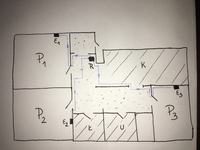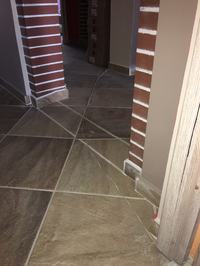Good day.
Due to the fact that I want to replace the floor in the whole corridor with porcelain tiles, I would like to route the Ethernet cables under the tiles to each room. I have a telephone socket in the corridor and here there will also be a router (Orange FunBox). From him I want to route 3 Ethernet cables, one to each room and exactly to the Ethernet wall sockets. I would like to ask for advice on how to plan such a network, it is exactly what Ethernet cables to buy, which can be laid under the text and any other tips. I'm not interested in connecting several computers to a LAN because I have only one, the rest of the equipment works under WiFi. I just want to end up with an annoying cable walking across the floor.
The plan of the apartment is attached.
Dotted places: corridor; E1 - Ethernet sockets; R - router.
Thank you in advance for any advice.



Due to the fact that I want to replace the floor in the whole corridor with porcelain tiles, I would like to route the Ethernet cables under the tiles to each room. I have a telephone socket in the corridor and here there will also be a router (Orange FunBox). From him I want to route 3 Ethernet cables, one to each room and exactly to the Ethernet wall sockets. I would like to ask for advice on how to plan such a network, it is exactly what Ethernet cables to buy, which can be laid under the text and any other tips. I'm not interested in connecting several computers to a LAN because I have only one, the rest of the equipment works under WiFi. I just want to end up with an annoying cable walking across the floor.
The plan of the apartment is attached.
Dotted places: corridor; E1 - Ethernet sockets; R - router.
Thank you in advance for any advice.





